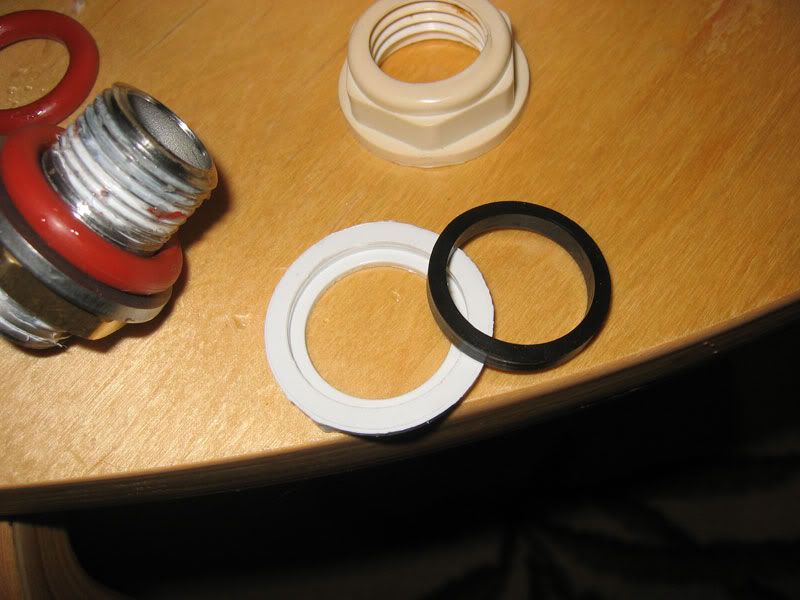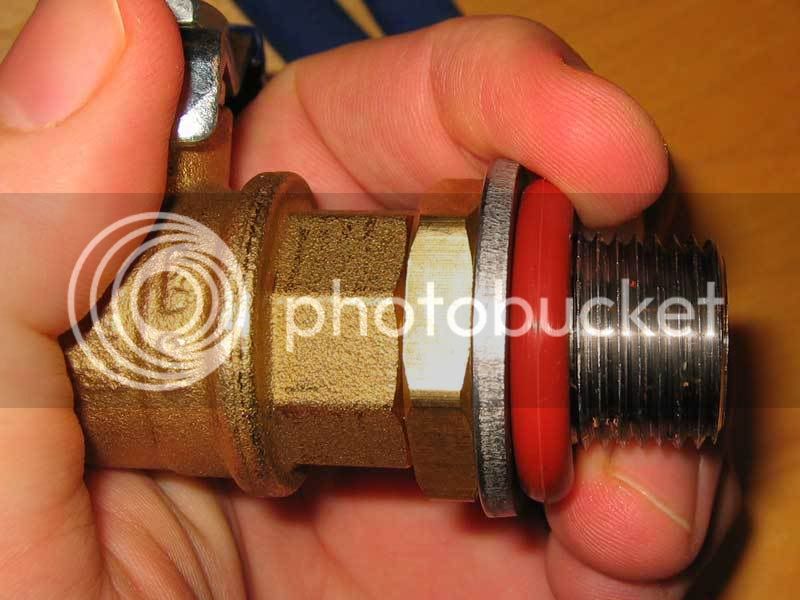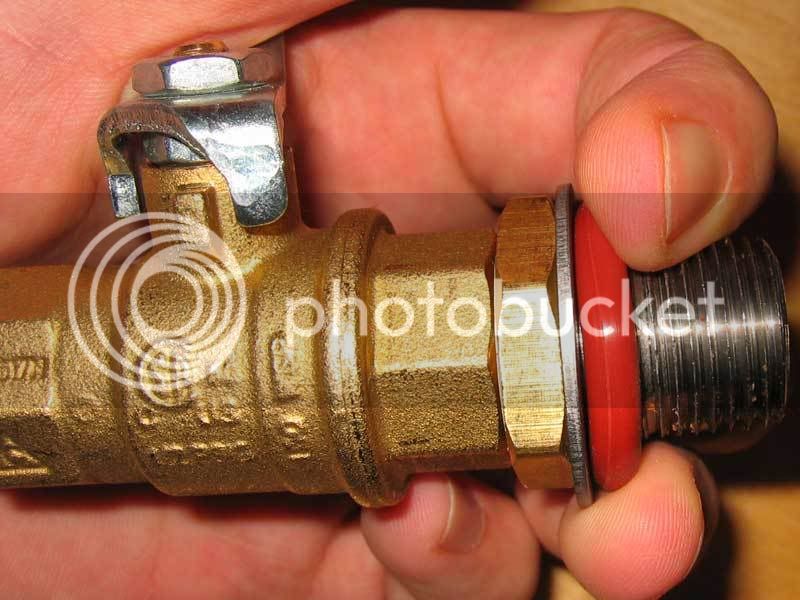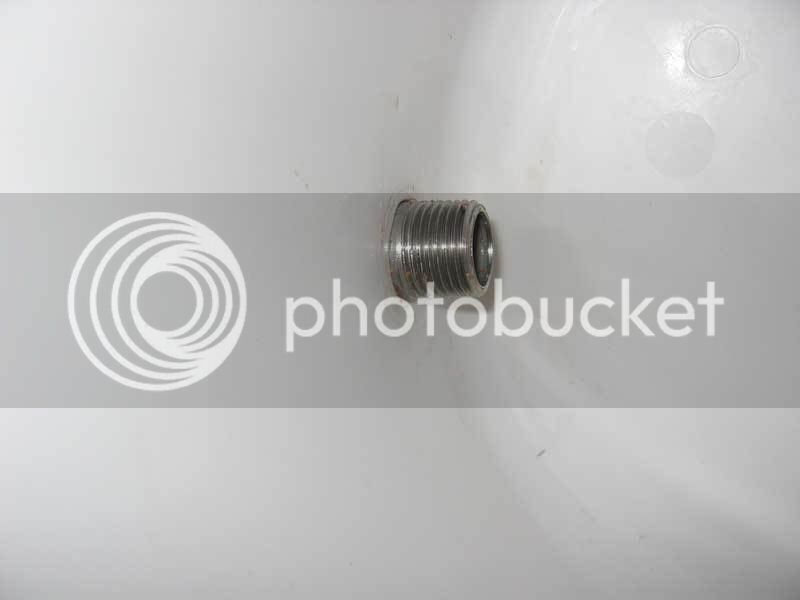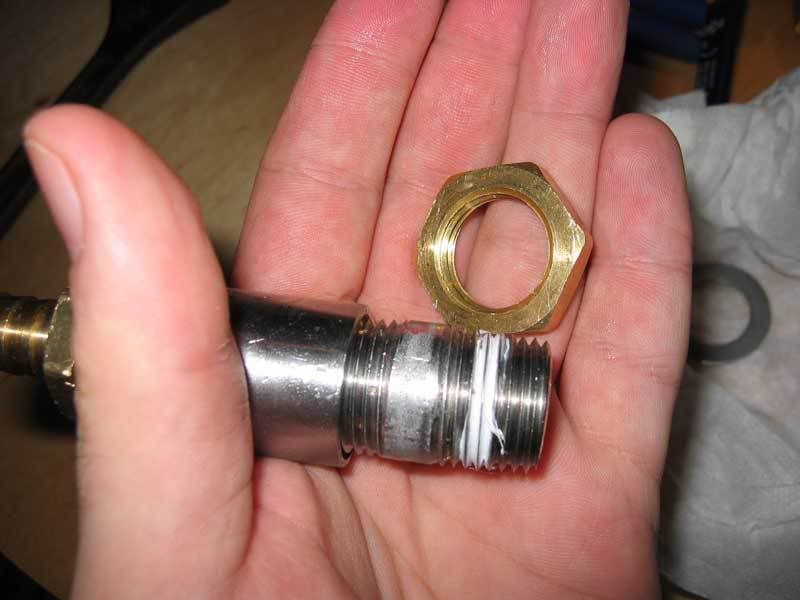nostalgia
Well-Known Member
I had been at my local hardware stores and big orange box stores looking for bulkhead fittings to put a ball valve on my Igloo cooler. I'd seen the threads on here using a pipe nipple, but it never seemed right to use the pipe threads as both a sealing surface (which they're designed for) and as a way to hold the fitting in place on the wall of the cooler (which they're not designed for).
So I needed a bulkhead fitting, which has threads on the outside to hold it in place and threads on the inside to put your valve and hose barb on. Austin Homebrew's SS Bulkhead appeared to be exactly that. The description read, "This is a stainless steel no-weld bulkhead for kettles, and for cooler mash tuns with a factory spigot." So I bought one along with my last order. Here's what I got:
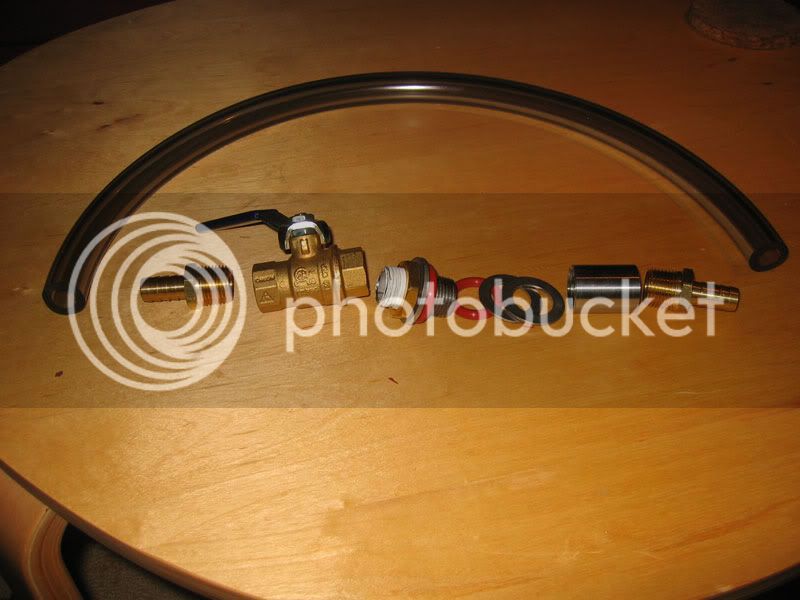
Looked good to me until I looked a little closer. It turns out this is not a bulkhead fitting at all but nothing more than a 1/2" pipe nipple with a loose nut on it.
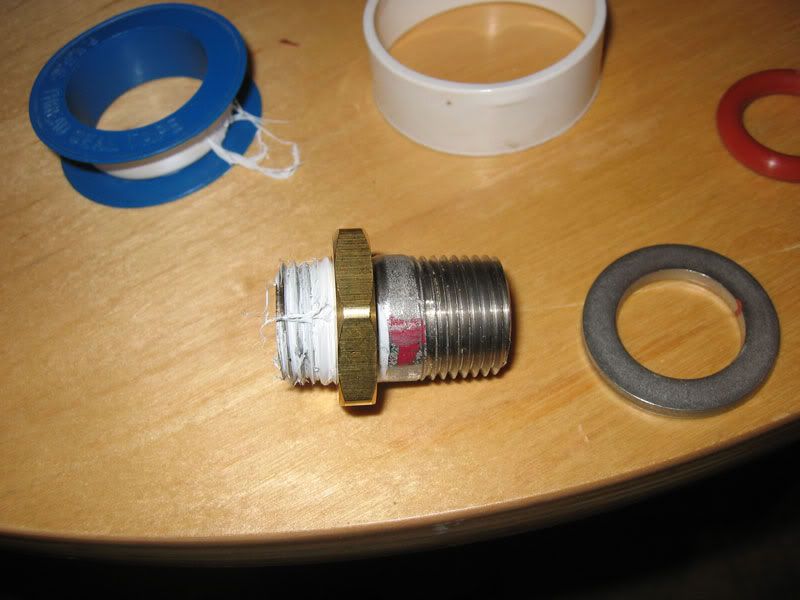
Ugh. False advertising aside, I decided to go ahead and try to install it. Following the directions, one thick washer and O-ring go on the outside, while an O-ring and two thin washers go on the inside. Not a whole lot of thread for the stainless sleeve to grab:
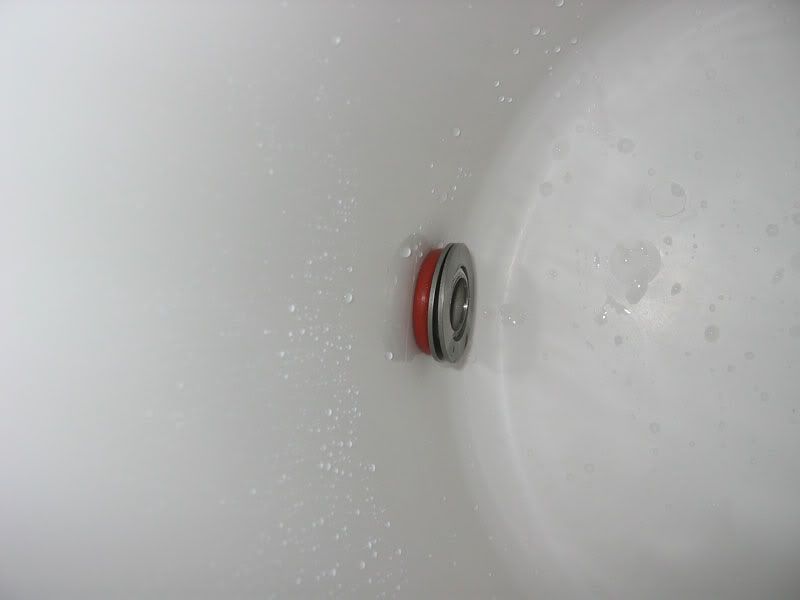
I managed to get the sleeve on, but as I tightened it I noticed something strange - the O-ring was oozing out the top of the washer.
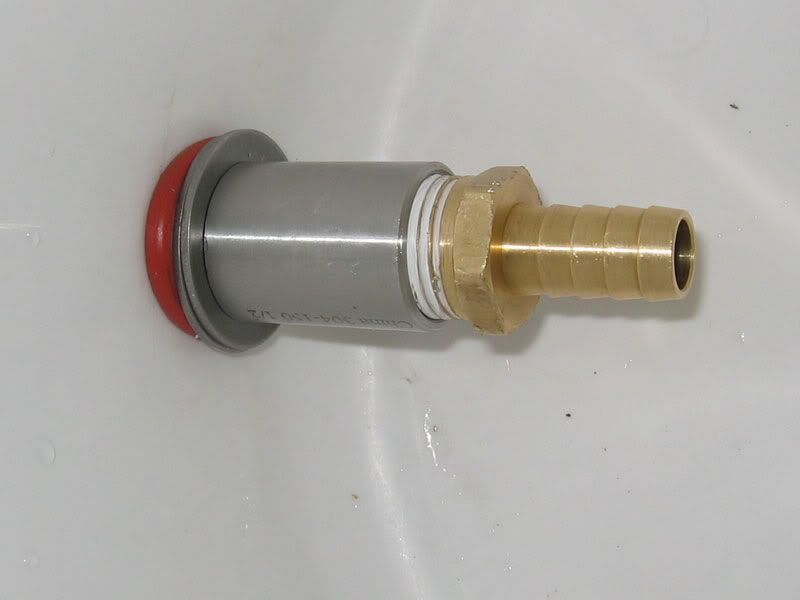
No matter what I did I couldn't get it to stop leaking. I tried tightening it, loosening it, using O-ring lube. Drip, drip, drip.
Until (next post due to picture limit...)
So I needed a bulkhead fitting, which has threads on the outside to hold it in place and threads on the inside to put your valve and hose barb on. Austin Homebrew's SS Bulkhead appeared to be exactly that. The description read, "This is a stainless steel no-weld bulkhead for kettles, and for cooler mash tuns with a factory spigot." So I bought one along with my last order. Here's what I got:

Looked good to me until I looked a little closer. It turns out this is not a bulkhead fitting at all but nothing more than a 1/2" pipe nipple with a loose nut on it.

Ugh. False advertising aside, I decided to go ahead and try to install it. Following the directions, one thick washer and O-ring go on the outside, while an O-ring and two thin washers go on the inside. Not a whole lot of thread for the stainless sleeve to grab:

I managed to get the sleeve on, but as I tightened it I noticed something strange - the O-ring was oozing out the top of the washer.

No matter what I did I couldn't get it to stop leaking. I tried tightening it, loosening it, using O-ring lube. Drip, drip, drip.
Until (next post due to picture limit...)


